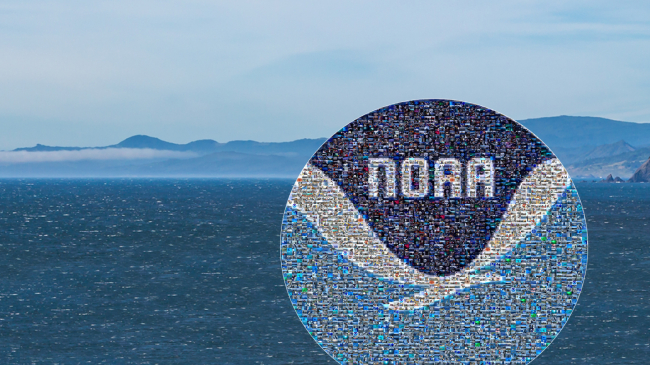
Aerial drone perspective with birds eye view on Elliot Bay with Puget Sound ocean water and city skyline of downtown skyscraper buildings in Pacific Northwest. (Image credit: iStock)
At the forefront of science
NOAA is a vital contributor to Seattle's dynamic academic, cultural and high-tech hub. From this inventive metropolis and important port city in the Pacific Northwest, NOAA also has a deep national and global footprint.
Seattle staff lead in innovatively restoring critical urban habitat offsite link. They're measuring urban carbon emissions from atop the famed Space Needle. West Coast Groundfish, once declared doomed, are back on market shelves.
Seattle scientists also lead in identifying how carbon dioxide overload affects global ocean health and a vulnerable food web, and in revamping the Tropical Pacific Observation System offsite link, a crucial link in understanding ocean, weather and global climate.
2,200+ bolts from the blue
In western Washington, the National Weather Service (NWS) supports a broad scope of critical activities. NWS Seattle provides weather forecasts and wildfire spot forecasts, supports full-scale volcanic eruption exercises, and contributes to emergency response plans. Staff also provide support for outdoor events that, as indicated below, can quickly turn dangerous.
Early warnings protect Husky fans
On September 7, tens of thousands of football fans were sitting in the University of Washington’s Husky Stadium as a line of powerful thunderstorms headed toward the region.

Several hours earlier, NWS Seattle meteorologist Jacob DeFlitch had briefed university emergency management staff about the storm’s severe potential, followed by a stream of information feeds.
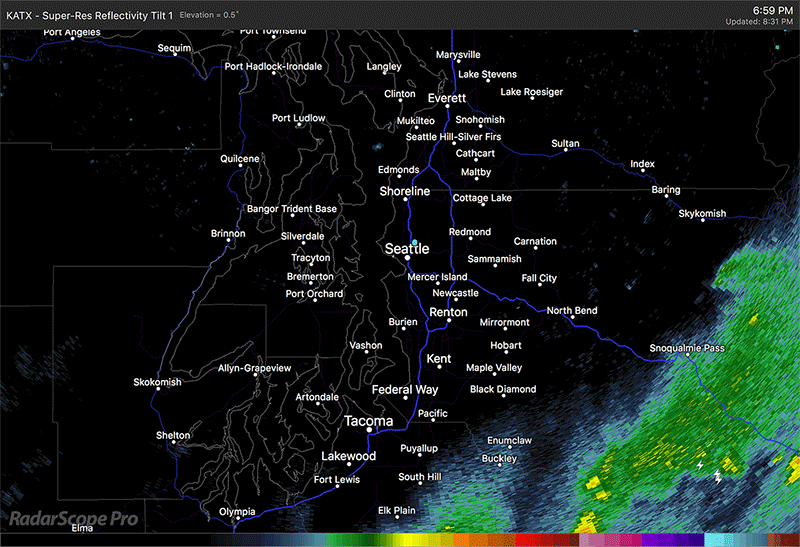
Doppler radar maintained by NWS Seattle provided meteorologists with a heads-up about the intense thunderstorms rapidly developing across western Washington. Shown above are NWS Seattle radar data between 6:59 PM and 8:26 PM. Warmer colors indicate heavier precipitation. Small white bolts/sparks indicate cloud-to-ground lightning strikes.

Along with radar, NWS meteorologists depend on lightning and ground-based observations as well as satellite data from GOES-16 and, shown above, GOES-17. NOAA's newest satellites provide the best available short-term severe weather forecasts.
With NOAA support, university officials were able to announce a shelter-in-place well before historic lightning and multiple power outages hit the stadium, causing a more than two-hour delay in play.
In just five hours, thunderstorms produced more than 2,200 lightning strikes over western Washington, a rare event for the area and the first-ever weather delay at Husky Stadium where football has been played since 1920.
“The expertise and timely weather data and forecasts routed to us were instrumental in any crisis decision-making at the height of the historic storm,” said Steven Charvat, director, University of Washington Emergency Management.
A river reborn in urban Seattle
Restoration of a unique ecosystem
Cutting through south Seattle, the Lower Duwamish River offsite link was once an estuary rich with fish and wildlife. It was an important passageway for species that migrated between freshwater and saltwater.
But after more than a century of commercial development, 97% of the original salmon habitat was gone. The nine-mile estuary had been trans-formed into a five-mile industrial channel.
Despite being part of active Superfund sites, the habitat is still crucial to the survival and recovery of threatened fish species, especially salmon.
Young fish must spend time in contaminated habitats to migrate from the river’s freshwater to the saltwater of Puget Sound and the Pacific. It’s their place to feed, grow and be safe from predators.
But even more is at stake. As a segment of Seattle's only river, the Lower Duwamish flows between neighborhoods and through Seattle's industrial core. The Port of Seattle, one of the largest ports on the West Coast, sits at its mouth.
In 2014, dramatic change sparked new life along the river, restoring its lure as a uniquely Seattle asset.
As part of a natural resources damage settlement, Boeing restored part of the waterfront, reshaping the shoreline, adding 170,000 native plants, and removing aging buildings, 700 pilings and 100,000 cubic acres of sediment.
To protect the new habitat, a stormwater treatment system now filters harmful chemicals before they reach the river.
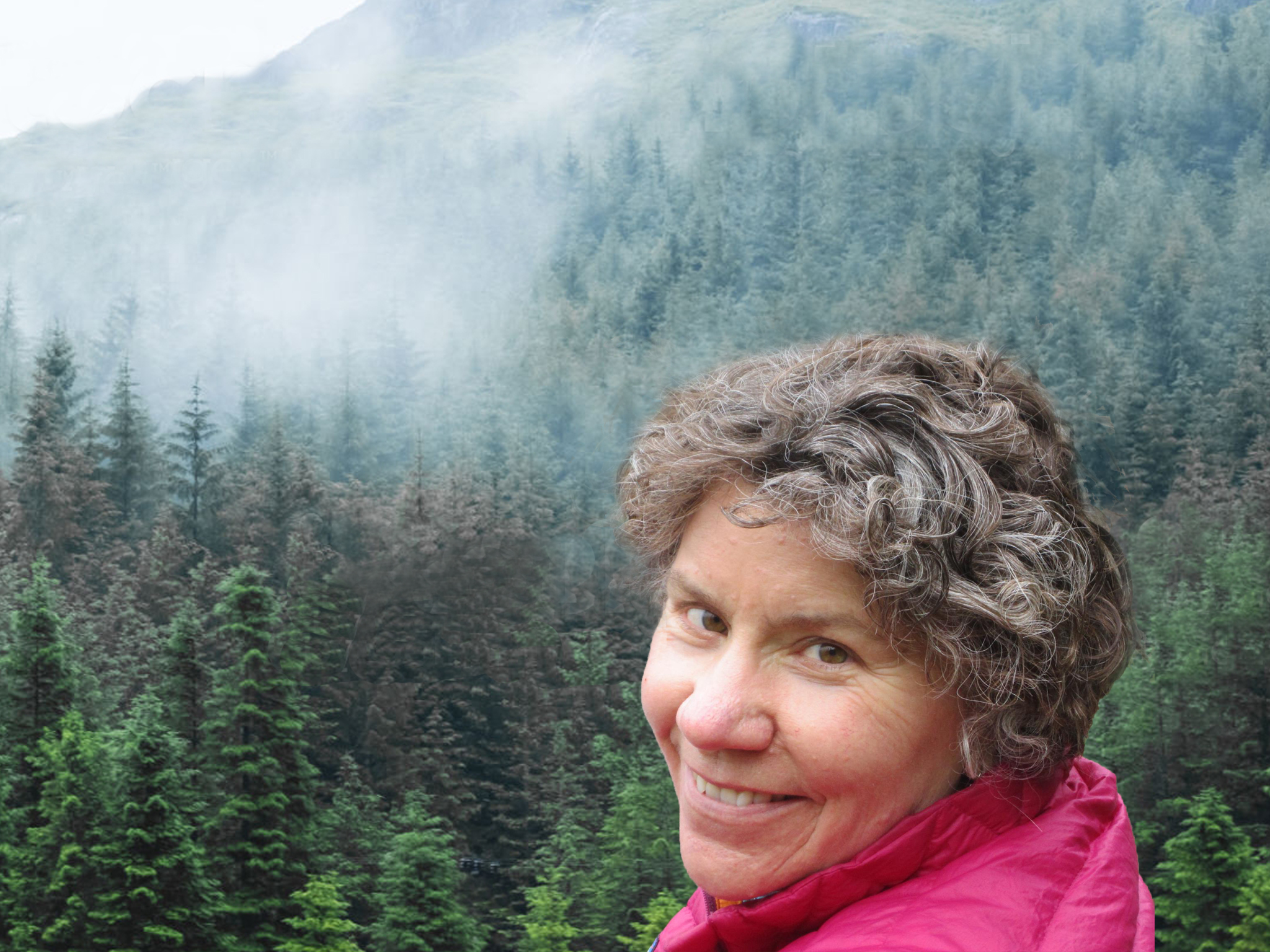
Working with federal, state and tribal partners, NOAA has helped restore almost five acres of a former industrial site, including more than two acres of intertidal wetlands.
Balancing the intertwining needs of cultures, communities, species and economies, the site is now the largest habitat restoration in the Lower Duwamish River.
All now share in the value of this successfully restored and vibrant section of Seattle’s distinct urban ecosystem.
Saving West Coast icons
West Coast Groundfish – Back in a big way
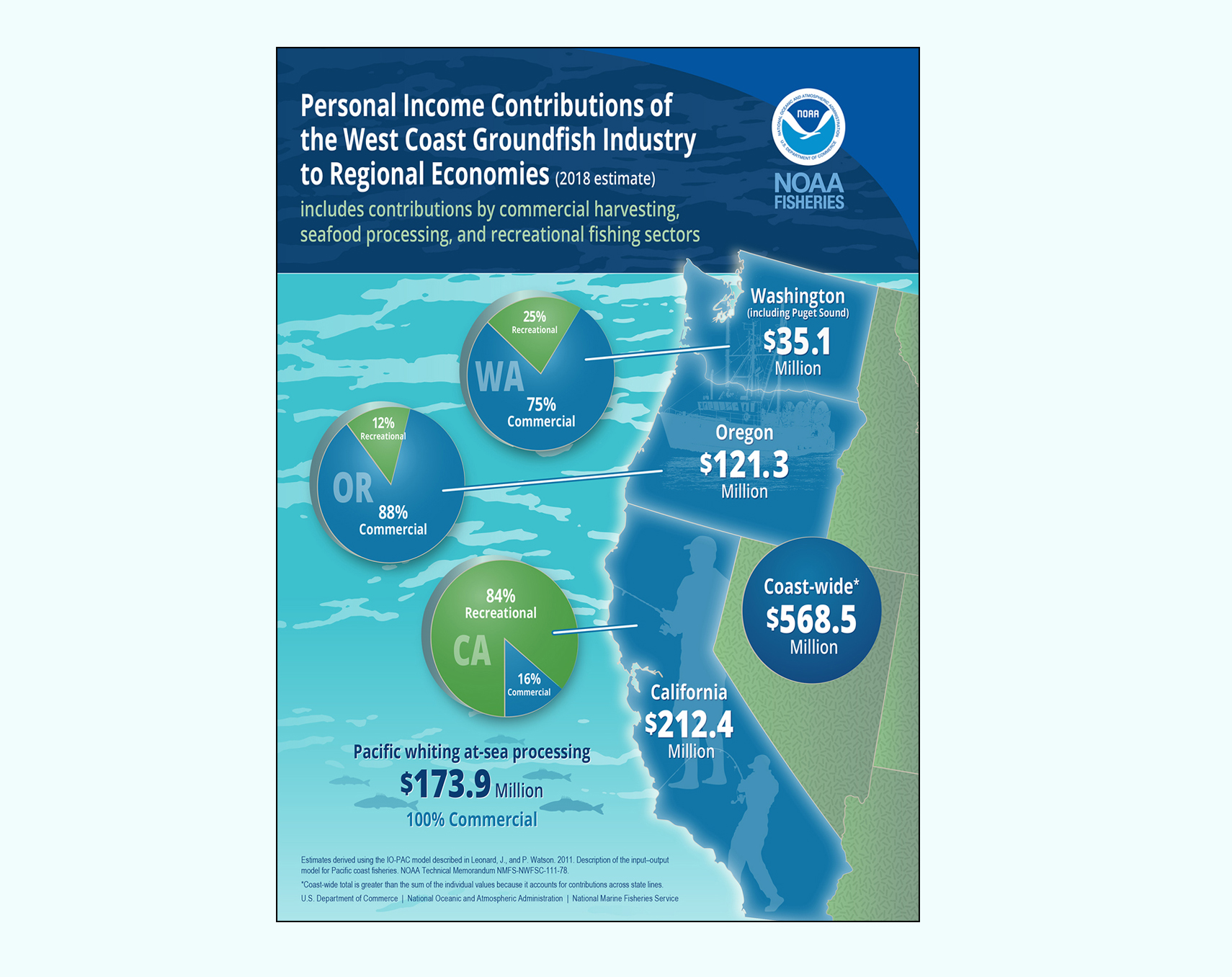
"Everyone sought a future"
West Coast Groundfish are back, a tribute to grit, sound science and management, shared sacrifice, and trust developed among fishermen, NOAA and other community partners.
In 2000, the groundfish industry was declared a failure. By 2002, hundreds of thousands of square miles of West Coast waters, home to nearly 100 species of groundfish, were closed to fishing.
Scientists estimated it could take nearly a century to rebuild some of the fish. But the fishing industry focused on survival. "Everyone sought a future," said Jason Cope, NOAA Fisheries biologist.

The Pacific Fishery Management Council introduced a "Catch Shares" model.
NOAA invited fishermen and other stake-holders to join in monitoring fish. Each fisherman had a quota, and everyone's catch counted toward the total.
Groundfish have rebounded dramatically. NOAA recently opened more areas to fishing while protecting crucial habitat, a clear sign to the market that this healthy and sustainable new choice now has a place at the table.
Circling Antarctica – A pioneering journey
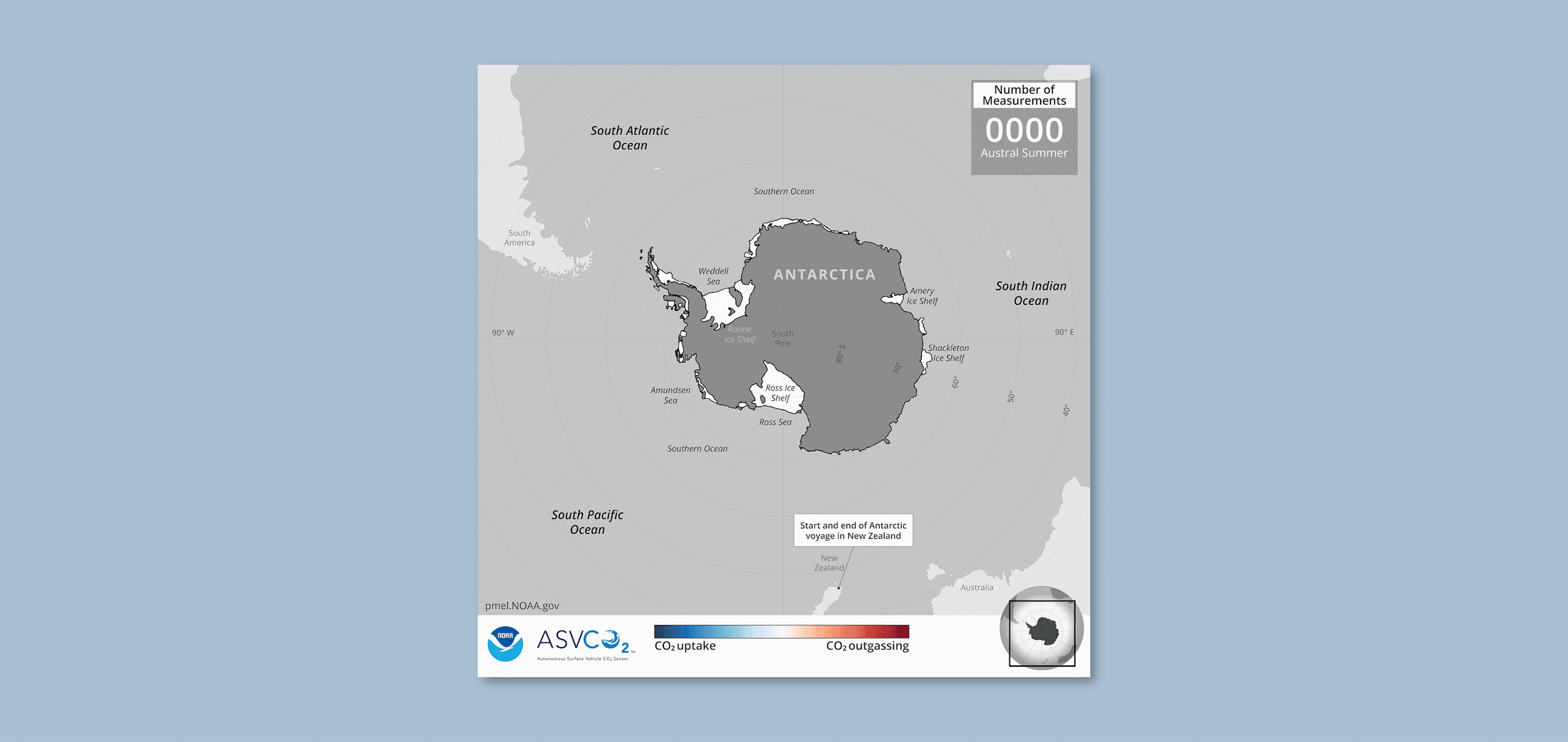
Intrepid drone pulls it off
With sensors developed by NOAA's Pacific Marine Environmental Laboratory, the Saildrone ocean drone just completed a landmark 13,670-mile mission around Antarctica, surviving freezing temperatures, 50-foot waves, 80 mph winds and collisions with giant icebergs.
The 196-day mission was a first for a vehicle with no crew.
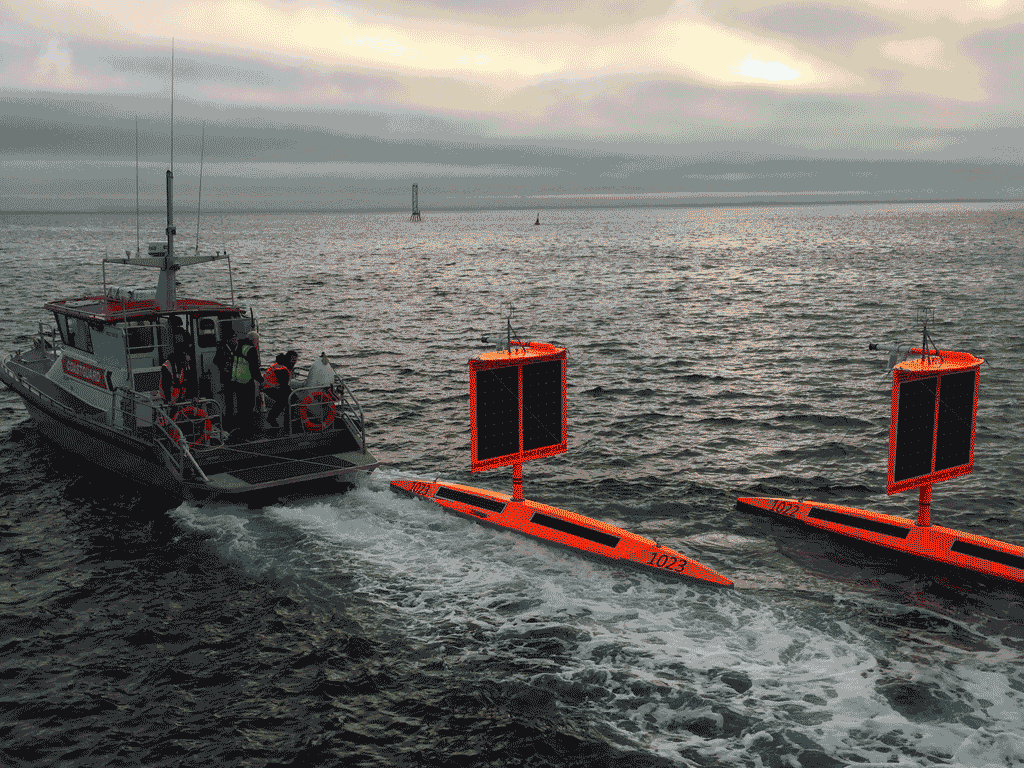
The Saildrone was in search of carbon dioxide in the Southern Ocean where the Antarctic's productive and highly diverse ecosystem plays an essential role in balancing global climate.
Until recently, scientists assumed the Southern Ocean absorbed large volumes of carbon dioxide, contributing significantly to the entire ocean’s uptake of greenhouse gases driving global warming. But other measurements showed that, under certain conditions, the Southern Ocean may be emitting carbon dioxide, rather than just absorbing it.
Early results suggest this is the case. The less carbon dioxide the Southern Ocean takes up, the more remains in the atmosphere, and this balance is key to predicting future climate.
Atop Seattle's Space Needle

Hot spot for urban emissions
Cities are hot spots for urban emissions, yet scientists typically measure carbon dioxide away from urban areas to avoid confusing local levels with global levels.
But Seattle scientists spotted a vital and innovative outreach opportunity.
Tall and central, primed to collect urban data, Seattle's Space Needle became an novel site for monitoring carbon dioxide. Coupled with data monitored from a buoy off the Pacific Coast, a real-time picture emerges of the atmospheric conditions around Seattle.
Looking to the sea
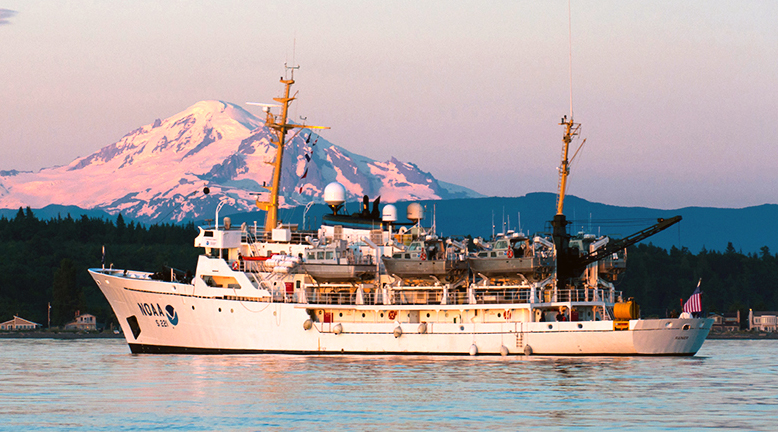
Data in real time
Much of NOAA’s timely, reliable and actionable data come from coastal waters and the sea. Real-time data support lives and livelihoods, weather forecasts, flood predictions, tsunami warnings, and more.
Shown here, NOAA Ship Rainier is one of four large ships in NOAA’s hydrographic fleet. Each ship is equipped to capture detailed seafloor images and accurately measure ocean depths.
Data shape NOAA’s nautical charts, which are critical to safe, efficient, competitive navigation. NOAA’s PORTS® and Integrated Ocean Observing System (IOOS®) support shipping operations at Seattle’s major ports and the data needs of many other stakeholders. PORTS® serves nearly one-third of U.S. major ports, which generate more than $4 trillion annually.
Since knowing how heights on land compare to local sea level is essential to America's resilience, NOAA is revolutionizng U.S. mapping by defining a more precise sea level with benchmark heights accurate to within about an inch.
The map below reflects a 2018 NOAA and U.S. Geological Survey project off the Pacific Coast. From aboard the Rainier, the survey produced baseline data to assess active faults and other hazards and updated nautical charts to reflect new seafloor depth.
To interact with the map below, visit this site offsite link, click Explore (lower right), then Legend (upper left).
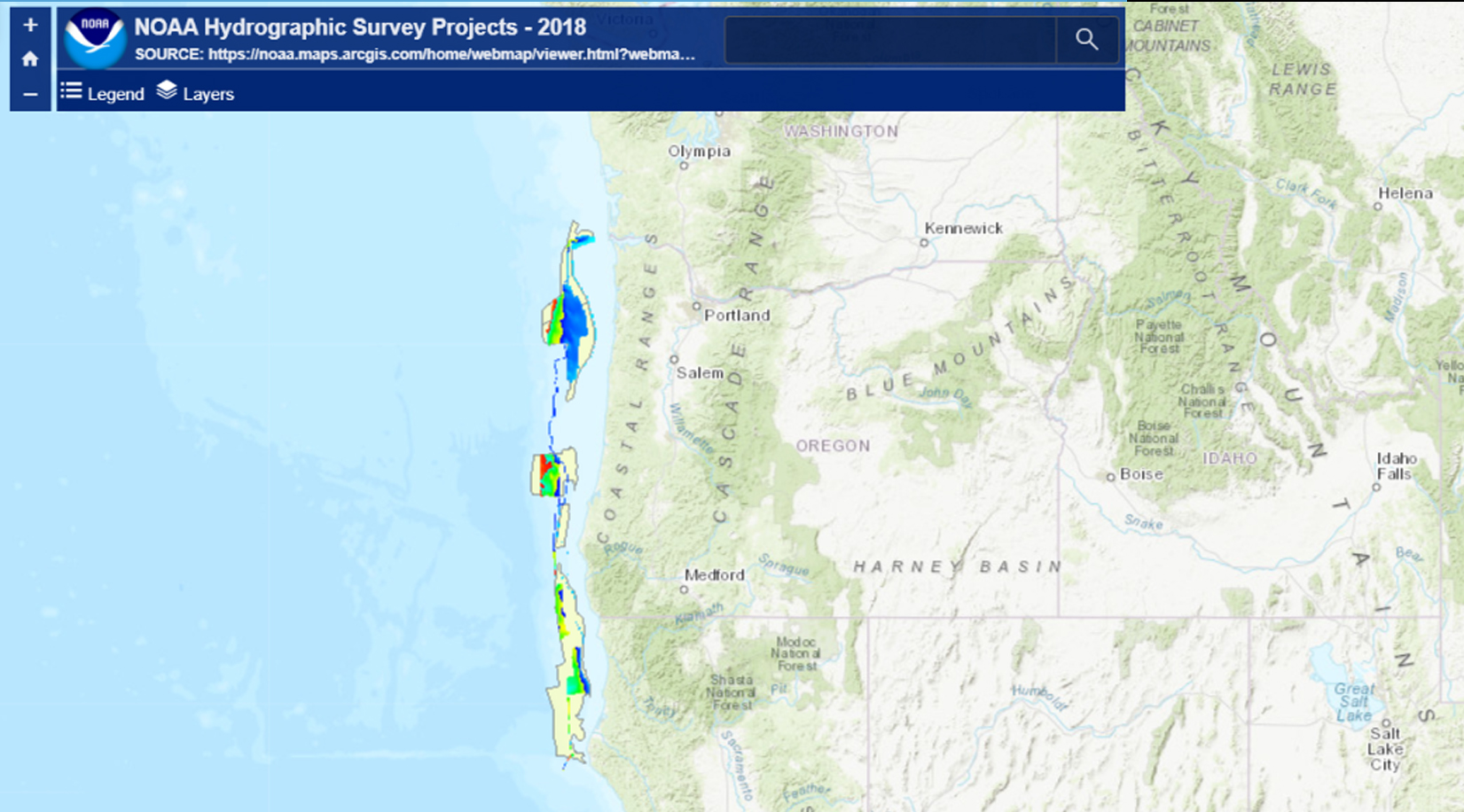
Safety on the sound
NOAA’s Seattle Navigation Response Team (NRT) recently supported safe navigation in Puget Sound where more than 800,000 passengers a year use a particular ferry route. Tidal conditions and shallow waters at the ferry terminal interrupt the trip several times a month.

When NOAA’s team surveyed the waters around the terminal, significant depth changes in the ferry channel became clear. After surveying, depths previously recorded to be six meters were found to be just two meters. To further increase safety, the team investigated and updated features on the nautical chart, including kelp beds, fog signals and pier pilings.
Visualizing a dynamic seafloor
NOAA's versatile fleet
Stakeholders across the nation rely on current, accurate data about the seafloor, which is constantly changing. NOAA's large vessels and smaller NRT vessels are equipped with sonar to provide this data.
As shown here, multibeam sonar measures seafloor depth by emitting "pings" or pulses of sound. Sonar measures the time it takes for pings to bounce off the seafloor and return to the ship with a vast collection of data.

Just as NOAA's large ships, the smaller NRT vessels are active on many fronts beyond the surveys vital to updating America's nautical roadmaps.
After a hurricane, for instance, NRT vessels are on-site fast, protecting ships from hazards and speeding economic recovery. Strategically located, the vessels are on-call to meet a range of emergency and other needs on our waterways.
Thank you, Seattle!
The pioneering work of NOAA’s Seattle employees helps keep NOAA at the forefront of science. NOAA’s presence in Seattle is a microcosm of NOAA as a whole, with weather, fisheries, research, oceans and coasts and support components driven by over 1,500 enterprising staff with widely diverse disciplines.
The scientific and technological milestones emerging from Seattle significantly deepen NOAA’s regional, national and global footprint. I am delighted this story map highlights several of them.

Benjamin Friedman
Deputy Under Secretary for Operations
National Oceanic and Atmospheric Administration
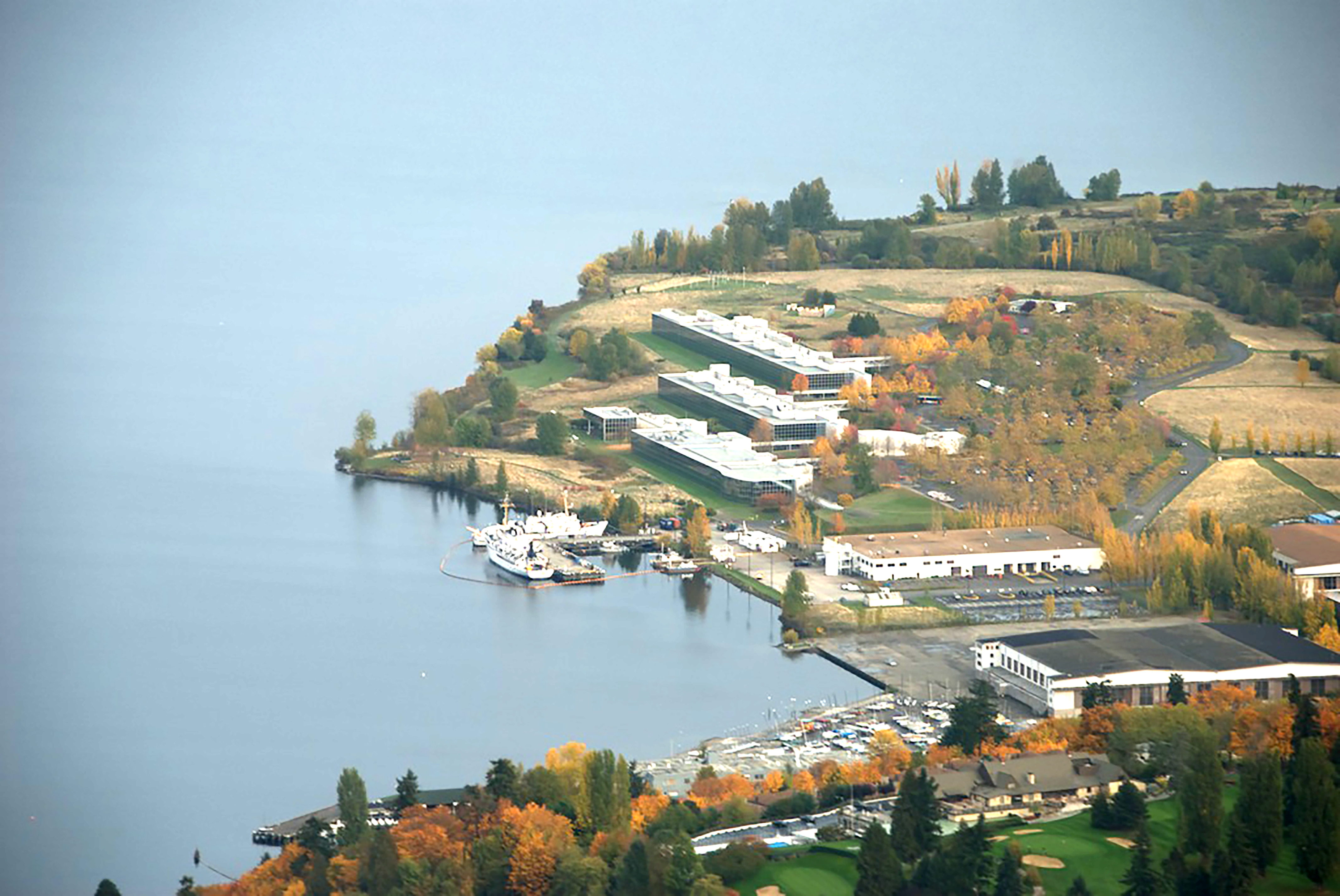
To view the original NOAA story map, please see this version on the ESRI websiteoffsite link offsite link.




